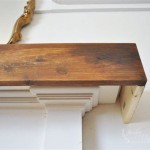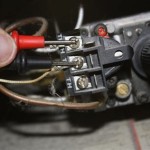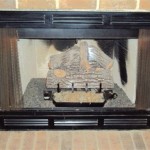Brick Fireplace Design Ideas For Stoves
The integration of a wood-burning stove within a brick fireplace presents an opportunity to combine the traditional aesthetic of brick with the functional efficiency of a modern heating appliance. A well-designed brick fireplace not only enhances the visual appeal of a living space but also provides a structurally sound and heat-resistant enclosure for the stove. Careful consideration of design elements, building codes, and safety regulations is essential for a successful installation.
The following sections will explore various design ideas for brick fireplaces incorporating wood-burning stoves, focusing on architectural styles, brick selection, hearth design, and safety considerations. The objective is to provide a comprehensive overview to assist homeowners and builders in creating a fireplace that is both aesthetically pleasing and functionally effective.
Architectural Styles and Brick Fireplace Designs
The architectural style of a home significantly influences the design of a brick fireplace. Matching the fireplace design to the existing architectural style ensures a cohesive and visually harmonious result. Several popular architectural styles lend themselves well to brick fireplace designs incorporating wood-burning stoves. These include traditional, modern, rustic, and contemporary styles.
Traditional architectural styles, such as Colonial or Victorian, often feature ornate brickwork, detailed mantels, and classic proportions. A brick fireplace in this style might incorporate features like arched firebox openings, corbels, and intricate brick patterns. The brick selection for a traditional fireplace would likely be a classic red brick or a reclaimed brick to enhance the antique feel. Furthermore, a cast iron stove with ornate detailing would complement the traditional style.
Modern architectural styles prioritize clean lines, simple forms, and functionality. A brick fireplace in a modern home might feature a minimalist design with a smooth, unadorned brick surface. The brick selection may include a smooth, modular brick in neutral colors like gray, white, or black. The stove design may incorporate a sleek, contemporary model with clean lines and a glass door, emphasizing the fire itself.
Rustic architectural styles emphasize natural materials and a sense of warmth and informality. A brick fireplace in a rustic home might incorporate rough-textured brick, exposed beams, and a large, rugged mantel. The brick selection may include a tumbled brick or a brick with a natural variation in color and texture. A wood-burning stove with a matte black finish would complement the rustic aesthetic. Larger stones and bricks are common elements in this design style.
Contemporary architectural styles blend elements of modern and traditional design, often emphasizing open spaces and natural light. A brick fireplace in a contemporary home might feature a combination of smooth and textured brick, a linear firebox opening, and a minimalist mantel. The brick selection may include a combination of colors and textures to create visual interest. The stove design may incorporate a blend of modern and traditional elements, such as a cast iron stove with a sleek, contemporary finish.
Brick Selection and Hearth Design
The selection of brick for a fireplace plays a crucial role in the overall aesthetic and performance of the structure. Different types of brick offer varying levels of heat resistance, durability, and visual appeal. Common types of brick used in fireplace construction include face brick, firebrick, and paving brick.
Face brick is typically used for the exterior of the fireplace and is available in a wide range of colors, textures, and sizes. Face brick is primarily selected for its aesthetic qualities and should be chosen to complement the architectural style of the home. While face brick can withstand high temperatures, it is not designed for direct exposure to the flames of a wood-burning stove.
Firebrick is specifically designed for use in the firebox of a fireplace and is capable of withstanding extremely high temperatures. Firebrick is typically made from refractory clay and is highly resistant to thermal shock and cracking. It is essential to line the firebox of a brick fireplace with firebrick to protect the surrounding brickwork from the intense heat generated by the stove.
Paving brick is often used for the hearth of a fireplace and is selected for its durability and slip resistance. The hearth is the non-combustible area in front of the firebox and is designed to protect the surrounding floor from sparks and embers. Paving brick is available in a variety of colors and textures and should be chosen to complement the overall design of the fireplace.
The hearth design is an important consideration for both aesthetic and safety reasons. The hearth should be large enough to catch any embers or sparks that may escape from the stove. Building codes typically specify minimum hearth dimensions based on the size of the firebox opening. Common hearth materials include brick, stone, tile, and concrete. The hearth can be flush with the surrounding floor or raised to create a more prominent feature.
Safety Considerations and Building Codes
Installing a wood-burning stove within a brick fireplace requires careful attention to safety considerations and compliance with building codes. Improper installation can lead to fire hazards, carbon monoxide poisoning, and structural damage. It is highly recommended to consult with a qualified professional, such as a certified chimney sweep or a licensed contractor, to ensure that the installation meets all applicable requirements.
Building codes typically specify minimum clearances between the wood-burning stove and combustible materials, such as walls, ceilings, and furniture. These clearances are designed to prevent the combustible materials from overheating and catching fire. The stove manufacturer's instructions typically provide specific clearance requirements for the particular model. Furthermore, the brick fireplace itself must be constructed in accordance with local building codes ensuring structural integrity and fire resistance.
Proper ventilation is essential for the safe operation of a wood-burning stove. The chimney must be properly sized and constructed to ensure adequate draft and to prevent the buildup of creosote, a flammable substance that can accumulate in the chimney. Regular chimney inspections and cleaning are necessary to prevent chimney fires. Utilizing a chimney liner can improve the draft and protect the brickwork from corrosion.
Carbon monoxide detectors should be installed in the home to alert occupants to the presence of this odorless, colorless, and deadly gas. Carbon monoxide can be produced by the incomplete combustion of wood in the stove. Regular maintenance of the stove, including cleaning and inspection, can help to prevent carbon monoxide leaks.
The selection of a certified wood-burning stove that meets emission standards is also crucial. Certified stoves are designed to burn wood more efficiently and produce less smoke and particulate matter, reducing air pollution and improving indoor air quality. The Environmental Protection Agency (EPA) provides a list of certified wood stoves that meet their emission standards.
The installation of a stove within an existing fireplace may require modifications to the fireplace structure to accommodate the stove and ensure proper ventilation. These modifications may include enlarging the firebox opening, adding a chimney liner, or constructing a new hearth. It is essential to obtain the necessary permits from the local building department before making any modifications to the fireplace.
Finally, educating all occupants of the home about the safe operation of the wood-burning stove is essential. This includes proper wood storage, loading the stove correctly, and maintaining a safe distance from the stove while it is in operation. Clear instructions on how to respond in the event of a fire or carbon monoxide leak should also be provided.

Brick Fireplace Design Installation Scarlett Fireplaces

Brick Wood Stove Hearth Ideas Chefkozmo Fireplace

11 Log Burners Exposed Brick Ideas Burner Wood Burning Stove Inglenook

Brick Fireplace Design Installation Scarlett Fireplaces

Wood Burning Stove With Brick Surround Fireplace

Brick Fireplace Design Installation Scarlett Fireplaces

Gallery False Chimney T Surround For Stove The Box

20 Ideas To Decorate Around A Wood Burning Stove
.jpg?strip=all)
Brick Fireplace Design Installation Scarlett Fireplaces

Thin Brick Wood Stove Surround Looks Great Feels Toasty
Related Posts








